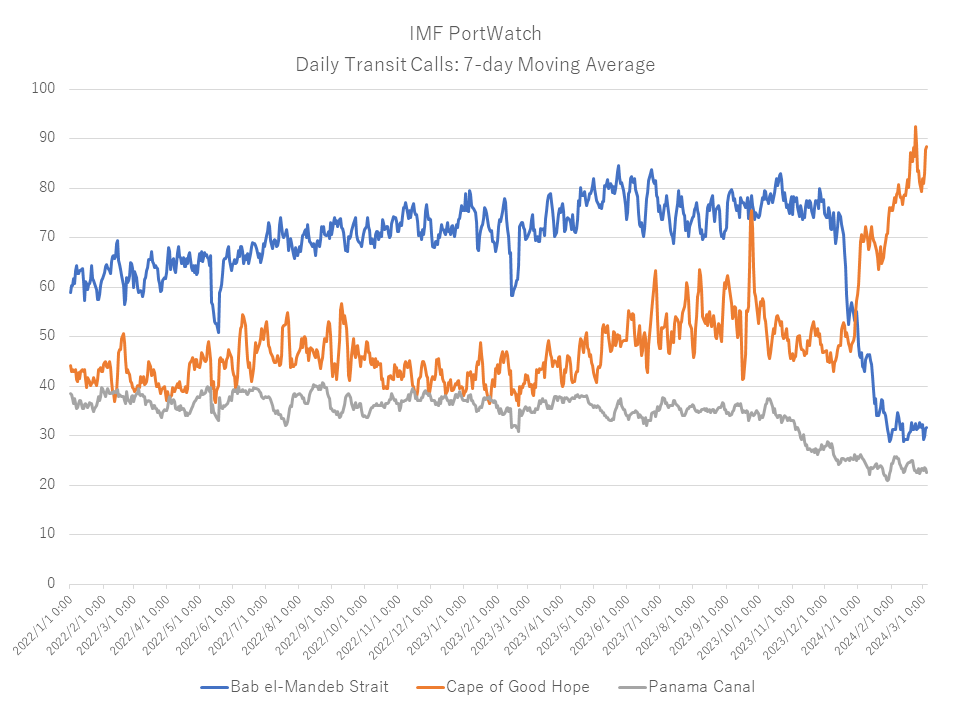Pick Up
977. Disruption to the Red Sea-Panama Canal Supply Chain

977. Disruption to the Red Sea-Panama Canal Supply Chain
In recent months, two key shipping routes for global trade have been at risk of supply chain disruptions, amid reports that maritime traffic in the Black Sea is steadily recovering.
An IMF blog on international trade analyzed the impact on logistics using data from the PortWatch platform, which uses satellite data and big data analytics to quickly identify and predict the impact of extreme weather and other events on trade.
The supply chain of the Suez Canal, the shortest shipping lane between Asia and Europe, which accounts for 15% of the world's seaborne trade in normal times, has been severely disrupted by Houthi attacks on ships transiting the Red Sea in the chaotic Middle East. The number of ships transiting the Suez Canal is down 50% from last year, while those transiting the Cape of Good Hope are up nearly 74% from last year. Diverting to the Cape of Good Hope takes an average of more than 10 extra days, which is a major blow to companies with limited inventories. Meanwhile, the number of vessels transiting the Panama Canal due to water shortages is also down 32% year-over-year.
According to PortWatch, in January and February 2024, vessels calling at 70 ports in sub-Saharan Africa were down 6.7% year over year, and 5.3% in Europe, the Middle East and Central Asia. The IMF blog warned that if the current situation continues, these supply chain disruptions will spill over and affect supply chains in the affected countries, putting inflationary pressure on food, fuel and other commodity prices.
Contributor: IIYAMA Miyuki (Information Program)
